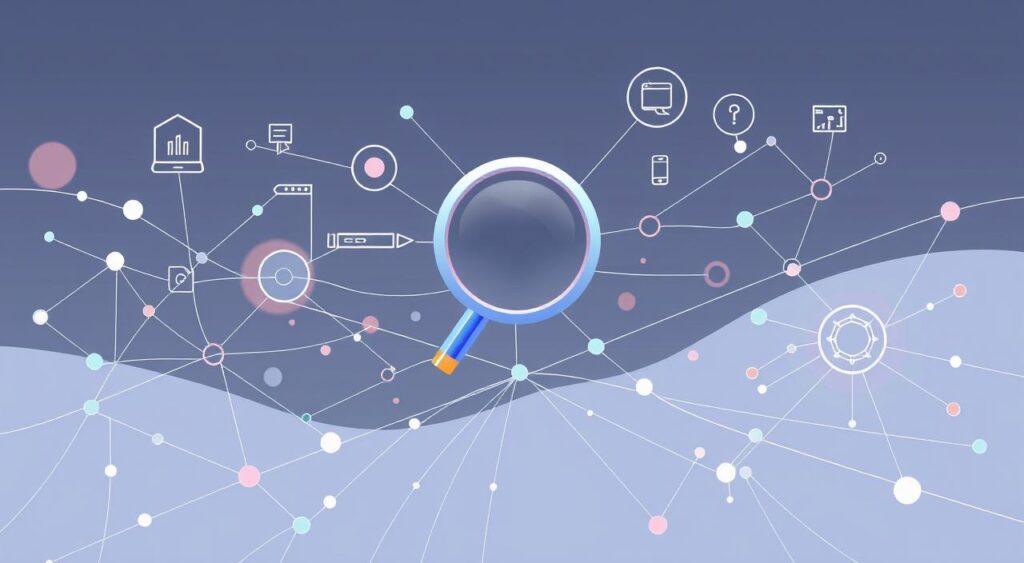What if the next big company isn’t trying to change your industry? The disruptive innovation mental model turns traditional thinking upside down. It shows how startups can beat giants by focusing on customers they ignore first1.
Harvard professor Clayton Christensen created this framework. It explains why big companies often miss out on big changes.
His #1-ranked theory1 shows that big firms innovate too fast for what customers need. This opens the door for simpler, cheaper solutions.
Ever wondered why Apple’s iPhone was seen as a “non-disruptor” but succeeded? Christensen himself said it was a surprise, showing how hard it is to predict1.
This mental model helps us see disruption as a pattern, not chaos. Unlike sustaining innovations, which improve existing products, disruptive ones create new markets1. The key lesson? Success comes from finding unmet needs before others do.
Key Takeaways
- Disruptive innovations start by serving overlooked customer segments, not competing head-to head.
- Over 25% of major innovations occur accidentally, not through planned innovation strategy projects1.
- Even tech giants like Apple don’t always aim to disrupt—they build what people want first1.
- Christensen’s original case studies are now questioned for relying too much on stories1.
- 90% of corporate strategies misuse the term “disruptive innovation” in marketing1.
Understanding Disruptive Innovation
Disruptive innovation changes industries by bringing in simpler, cheaper solutions. These solutions eventually take over the old markets. Clayton Christensen first talked about this in 19972. It leads to creative destruction as old systems disappear and new ones emerge.
Companies like Blockbuster found out the hard way. Netflix’s streaming service made them go out of business2. Let’s look at how this happens.
Definition and Origins
Christensen’s theory is about how new players upset established markets. They focus on needs that big companies ignore. Unlike small tweaks, disruptive innovation brings new value2.
For example, Texas Instruments made a portable transistor radio in 1954. It was for teens and those on a budget, not the rich. This created a new market segment3. Big players like RCA didn’t see the value, letting startups lead3.
Key Characteristics
- Targets underserved or low-end customers first
- Starts with simpler features but improves over time
- Driven by technology enabling affordability and accessibility
Real-World Examples
Smartphones took over from basic phones by adding internet and apps. This pushed brands like Nokia out of the market2. Tesla changed the car game by showing electric cars could be fast and luxurious2.
Even healthcare is changing. Telemedicine now handles 90% of visits for common issues like ear infections3. This challenges the old way of seeing doctors.
These examples show market disruption is more than just tech. It’s about finding where old systems fail and creating new solutions. Are you ready to spot the next big thing?
The Role of Technology in Disruption
Technology disruption changes industries by making companies adopt digital transformation to keep up. New technologies like AI and blockchain are more than tools; they spark change.
For example, Amazon started as an online bookstore in 1995 and changed retail, leading to the closure of competitors like Borders4.
Netflix’s streaming model also changed the game, making Blockbuster, once with 9,000 stores, now much smaller4. These examples show how tech changes force businesses to adapt or face being left behind.
“Disruptive innovations often target overlooked markets, allowing newcomers to challenge established players.”
How Technology Drives Change
Emerging tech lets companies rethink how they add value. Smartphones have replaced laptops for web browsing4. AI algorithms at Netflix have made recommendations more personal, boosting loyalty5.
Technology disruption isn’t just about new gadgets. It’s about changing business models. Cloud computing, for example, lets startups compete with big companies by cutting costs5.
Emerging Technologies to Watch
Here are trends shaping the future:
- AI and machine learning, improving healthcare diagnostics and customer experiences5.
- Blockchain enabling secure, transparent transactions without intermediaries5.
- Virtual reality transforming gaming and training simulations5.
Even small businesses can use these tools. For example, biotech firms use AI to speed up drug discovery, saving on R&D costs5.
The key is to spot breakthrough technologies early and adapt before others do. As Telefónica notes, disruption is about changing how value is delivered6.
Identifying Disruptive Innovations in Your Industry

Spotting disruptive innovation early can give your business a competitive edge. Joseph Schumpeter’s theory of creative destruction shows that market disruption often starts small. It replaces outdated practices with new value propositions7. Start by watching for these signs:
Signs of Disruptive Innovation
- Emerging startups offer simpler, cheaper solutions to underserved customers8
- Customers want features or price points ignored by industry leaders7
- 30% of initial market engagement comes from niche groups adopting new models9
Assessing Risks and Opportunities
Use these steps to evaluate threats and opportunities:
- Track competitors’ declining margins or stagnant growth8
- Map how new entrants disrupt with innovation strategy shifts, like Uber’s ride-sharing model8
- Allocate at least 15% of resources to innovation projects to spot trends 40% faster9
“Disruptive innovations thrive where customers feel underserved.”
Partnering with startups boosts success rates by 60%9, while monitoring competitors cuts disruption risks by 50%9. Remember: disruptive innovation isn’t just about tech—it’s about solving problems others ignore. Start by asking: Who isn’t your customer today, but could be tomorrow?
Strategies for Embracing Disruption
Adapting to disruption begins with changing how your business works. A business model innovation audit can show where your value or money-making is weak.
Companies like Facebook grow by buying new, disruptive startups early. Regular checks help you change before others do10.
For example, 52% of Fortune 500 companies from 2000 are gone. This shows staying the same is dangerous11.

- Look at your core processes through a digital transformation view
- Try out new ways to make money with agile testing
- Get all teams involved in planning for new ideas
To encourage innovation, you need to change your culture. Only 37% of leaders think their teams can keep up with changes12. Make sure your team knows it’s okay to try new things. Use customer feedback to find out what they really want, like LEGO does with their fans.
Use KPIs like “Rate of Idea Implementation” to see how you’re doing.
Invest in training leaders to handle uncertainty. 68% of training now focuses on this skill12. Also, talk openly about what’s happening in your industry. The Harvard Business Review suggests spending 20% of your resources on innovation strategy to plan for the future.
Digital transformation is more than just IT; it’s a way of thinking. As Hype Innovation’s guide shows, you need both structure and flexibility. Start small by doing a two-week “innovation sprint” to test ideas.
Then, grow what works. You must change faster than disruption does to survive.
The Future of Disruptive Innovation
As industries change, it’s key to keep up with trends like creative destruction and technology disruption. New breakthrough technologies are changing markets, from healthcare to food. Let’s look at how to move forward in this changing world.
Trends to Monitor
In the past, innovations like transistor-based hearing aids changed industries fast. Prices fell from $229.50 in 1952 to affordable today13. Now, companies like Tyson Foods and Cargill are investing in lab-grown meat, showing a move towards sustainable options13.
Big tech names like Amazon and Netflix show how technology disruption can change whole sectors14. Look out for new players challenging old ones, as Christensen’s model shows13.
Preparing for Upcoming Shifts
To get ready for disruption, make sure to balance your innovation budget between small upgrades and big, risky projects. Most companies focus on small gains, but big changes often come from new markets14.
Use scenario planning to guess what’s coming, like how cheaper products can beat the leaders14. Stay flexible, as critics say being too strict with theory can miss important details13.


